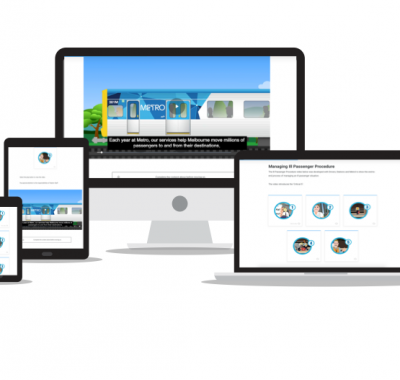eLearning Designer Sydney
eLearning Designer Sydney
What does a Sydney eLearning Designer do?
Our Sydney-based eLearning Designer creates, develops, reviews, and gradually improves online courses around Learning Design using e-learning creation technologies like Articulate 360.
An eLearning Designer is in charge of the actual design of the learning, including sequencing, content, and training, as opposed to an eLearning Developer in Sydney, who frequently concentrates only on the creation of a programme. The online education designer will frequently collaborate with subject matter experts (SME) to produce the course’s learning materials and design the course flow before creating the programme utilising the proper authoring technology.
Key Responsibilities of the eLearning Designer:
- Plan and schedule educational activities to produce a coherent flow.
- Make eLearning modules that concisely teach complex concepts.
- To promote learning by giving precise instructions.
- To create adaptive eLearning designs and efficiently deliver material, choose the correct authoring tools.
- Choose the appropriate interactive features, elements, and content delivery techniques.
- To convey information and context visually, use illustrations, photographs, and diagrams.
- Make assessments that are consistent with the learning objectives.
- Use a learning management system to publish eLearning (LMS)
- To determine whether the eLearning programme is effective, analyse the evaluation outcomes.
- eLearning programmes should be continually improved based on evaluation outcomes.
What is the difference between e-Learning and Instructional Design ?
Although both instructional design and eLearning include the creation of adult learning experiences, there are significant differences between the two. By combining instructional design principles with adult learning theories, instructional designers produce learning experiences that aid students in obtaining the knowledge, skills, and behaviours required to achieve certain objectives. Many methods of delivering training are referred to as “instructional design,” including face-to-face instruction, facilitator-led instruction, self-paced instruction, leader-led education, on-the-job training, online instruction, and eLearning.’
The majority of eLearning is done online. Although it relies on the authoring tool that was used to create it, self-paced learning is frequently employed. One of the various platforms that can be utilised to alter eLearning is a computer, tablet, or mobile device. As opposed to instructional designers who might construct eLearning using a storyboard, eLearning Developers use an authoring tool to create the eLearning programme. Because they frequently have both the abilities of instructional design and eLearning authoring, the eLearning designer may take over if the instructional designer determines that eLearning is a good fit for the learning objectives. To learn more about Instructional Design in Sydney visit our Instructional Design page or read about our several Sydney Instructional Design Courses.
eLearning Designer Sydney – Skills and Qualities
Communication
To create effective instruction, and to communicate with stakeholders, SMEs, instructors, video developers, graphic designers and other relevant persons
Learner-focused
eLearning Designers should have the learner front of mind in everything that they do.
When designing and developing eLearning, they should ask themselves:
- Is it easy to navigate?
- Is the content clear and concise?
- Are the activities relevant, impactful and contextualised?
- Does it include a variety of interactions and elements to keep learners engaged?
Eagerness to Learn
eLearning is an innovative field that is continuously evolving. Authoring tools and software are constantly updated to incorporate new, complex elements and features, which open up further possibilities for delivering content in engaging and effective ways.
It’s important that eLearning Designers are keen learners to:
- Keep up with the latest learning research and trends
- Develop skills in areas that will support eLearning design
- Build and refine skills in using various authoring tools and design software
- Deliver effective educational design services
Creativity
Creative and innovative eLearning Designers will:
- Explore methods of delivering content in more engaging, inciteful and efficient ways
- Create rich learning tasks that deepen learners’ understanding
- Develop realistic, interactive scenarios that support learners in applying concepts in context
- Ideate designs for images, diagrams, infographics, videos and other elements that will enhance the content
Enquire Now
eLearning Development Articles and Advice
- IDA’s eLearning
- eLearning: Dos and Don’ts
- How-To: Design for Online Courses
- The Learning Benefits of Video and Multimedia
- Moving training online
- More articles on instructional design
- Learn more about our eLearning Development services here







